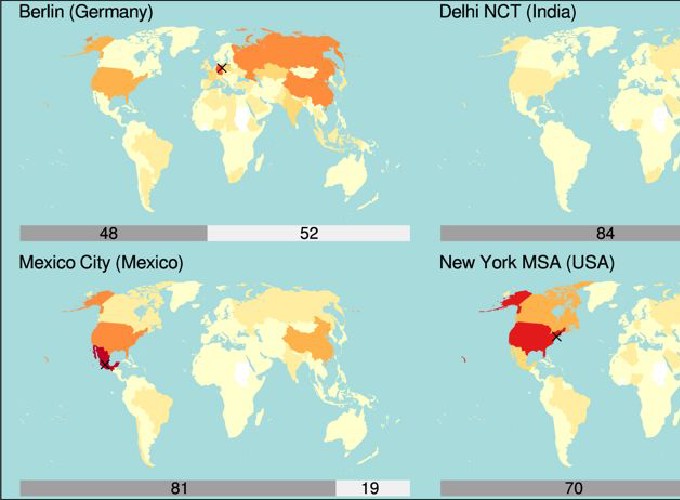Abstract
Cities are economically open systems that depend on goods and services imported from national and global markets to satisfy their material and energy requirements. Greenhouse Gas (GHG) footprints are thus a highly relevant metric for urban climate change mitigation since they not only include direct emissions from urban consumption activities, but also upstream emissions, i.e. emissions that occur along the global production chain of the goods and services purchased by local consumers. This complementary approach to territorially-focused emission accounting has added critical nuance to the debate on climate change mitigation by highlighting the responsibility of consumers in a globalized economy. Yet, city officials are largely either unaware of their upstream emissions or doubtful about their ability to count and control them. This study provides the first internationally comparable GHG footprints for four cities (Berlin, Delhi NCT, Mexico City, and New York metropolitan area) applying a consistent method that can be extended to other global cities using available data. We show that upstream emissions from urban household consumption are in the same order of magnitude as cities’ overall territorial emissions and that local policy leverage to reduce upstream emissions is larger than typically assumed.
